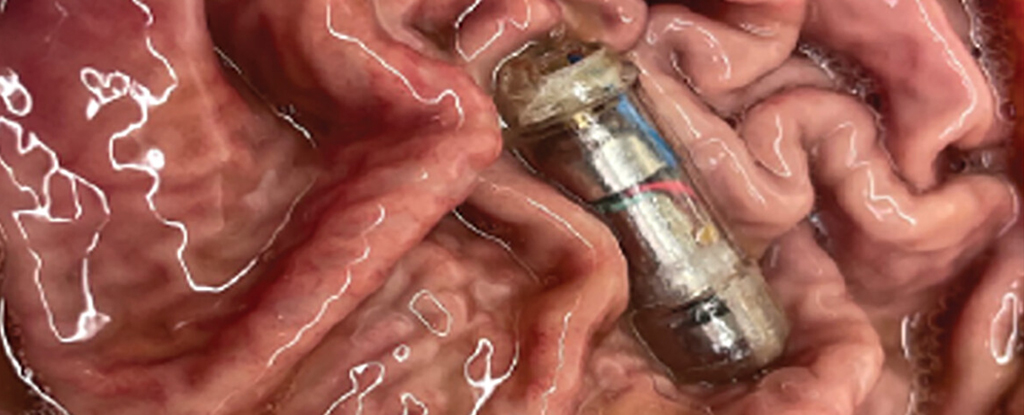
Losing extra weight can be challenging, especially when craving a sense of fullness. This has led researchers to continuously explore inventive methods to deceive our stomachs into believing they’ve enjoyed a satisfying meal.
MIT engineers have introduced an innovative solution to the challenge by creating a vibrating pill. This pill stimulates specialized stretch sensors in the stomach wall, sending signals to the brain that convey a sense of fullness.
“For somebody who wants to lose weight or control their appetite, it could be taken before each meal,” says former MIT student Shriya Srinivasan, who is now a bioengineer at Harvard University.
“This could be really interesting in that it would provide an option that could minimize the side effects that we see with the other pharmacological treatments out there.”
Roughly 40% of adults in the United States are currently classified as obese, and almost 30% fall into the overweight category. While the connection between body mass and well-being is intricate, the difficulties linked to carrying excess stored fat can often result in a range of concerning health conditions.
Weight gain often leads to a diminished capacity to find contentment in consuming smaller portions of food, particularly those rich in fats and sugars. Managing calorie intake through dieting becomes challenging when the brain is accustomed to anticipating more.
Various methods exist to manipulate our body’s digestive circuitry and suppress the hunger response. These approaches range from filling the stomach with low-calorie substances like water to more drastic measures such as bariatric surgery.
Some approaches focus on altering the brain’s chemistry, utilizing pharmaceuticals to eliminate the sensation of emptiness.
Like many medical interventions, each approach comes with its own set of advantages and disadvantages. Medications may have side effects, surgery is a highly invasive option, and not everyone finds satisfaction in filling up on cabbage soup.
“For a lot of populations, some of the more effective therapies for obesity are very costly. At scale, our device could be manufactured at a pretty cost-effective price point,” says Srinivasan.
The device is inherently straightforward. Known as a Vibrating Ingestible BioElectronic Stimulator (VIBES) pill, it comprises a capsule measuring 30.65 millimeters (slightly over 1 inch) in length, coated in a gelatinous membrane that dissolves within minutes of ingestion.

Contained within is a spring-loaded mechanism that activates a vibrating motor once the capsule safely reaches the stomach. The motor produces vibrations at frequencies specifically tuned to stimulate sensory nerves in the stomach wall, typically responsive to the stretching of tissues.
Trialed on ten robust young Yorkshire pigs, the capsules were observed for movement, safety, duration, and, ultimately, their effectiveness in reducing food intake. Each animal ingested the VIBE pill 20 minutes before their meal, with the device then vibrating in their stomach for approximately half an hour.
The pill not only led to an increase in hormones signaling the brain’s departure from hunger mode, but the pigs with the vibrating pill in their stomachs responded by consuming 40 percent less food than their voracious counterparts.
This also translated into an effective method of weight loss, as the test pigs exhibited slower weight gain during the experimental period. Without any signs of internal damage, the pigs naturally passed the capsules a few days later, unaware of the VIBE’s journey.
The researchers are currently exploring ways to extend the device’s operating time and adapt its design for clinical trials in humans, with the hope that it could become a groundbreaking method for weight loss.
The study findings were published in Science Advances.





